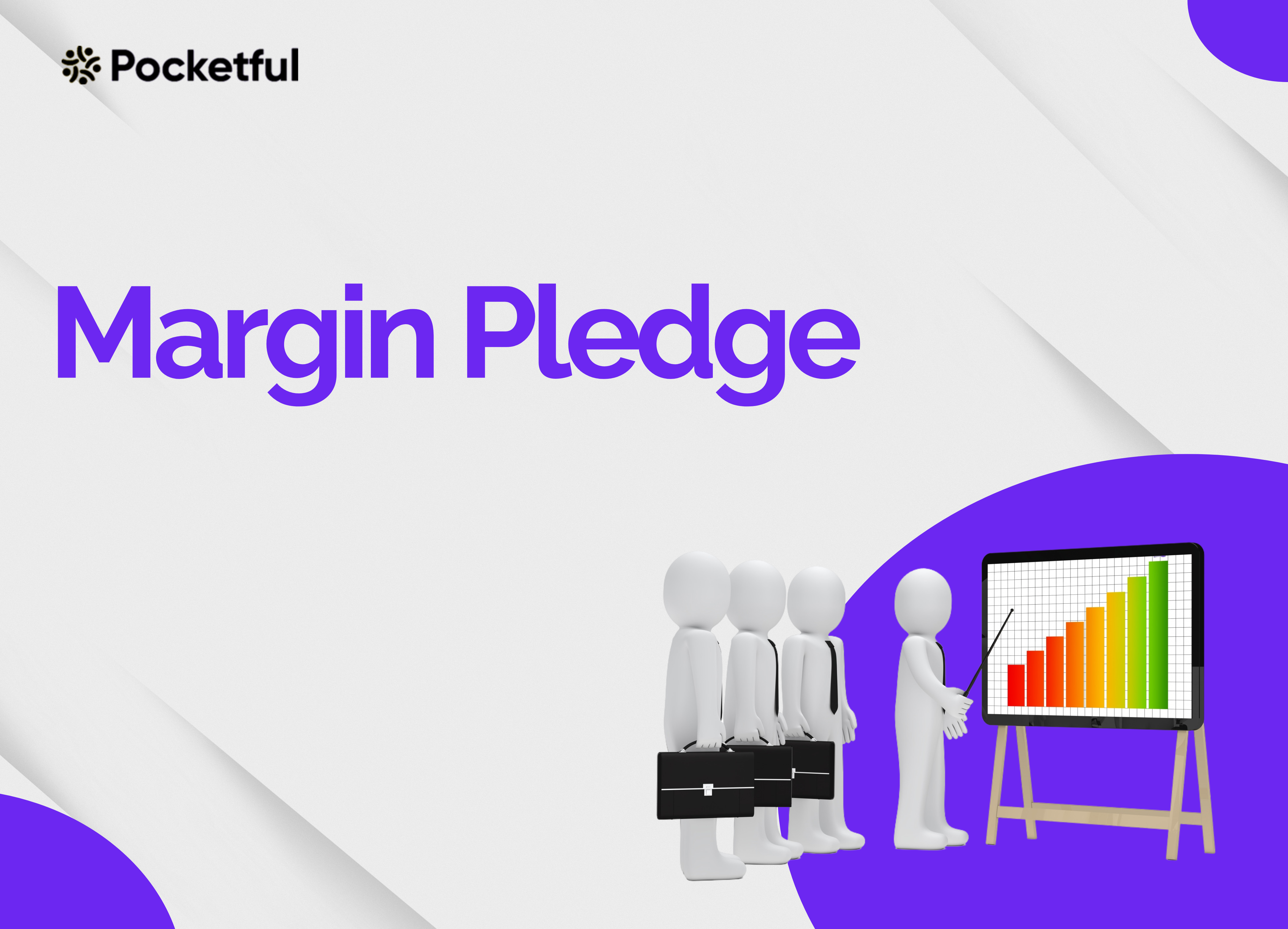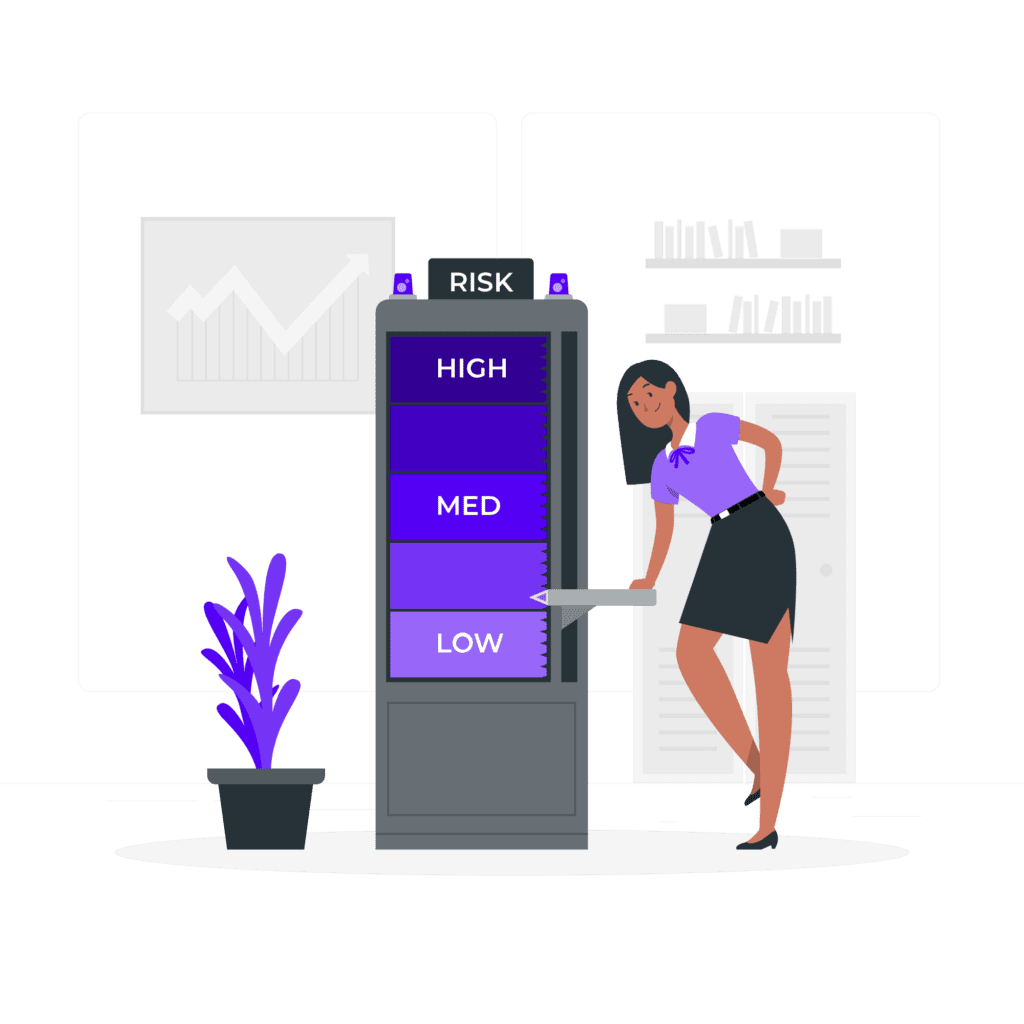| Type | Description | Contributor | Date |
|---|---|---|---|
| Post created | Pocketful Team | Jun-14-24 | |
| Internal linking | Nisha | Feb-17-25 | |
| Internal linking | Nisha | Feb-17-25 |

- Blog
- what is margin pledge
Margin Pledge: Meaning, Risks, And Benefits

Do you sometimes feel that your current capital is holding you back from the bigger moves in your F&O trades? If you are looking to seize new opportunities and are short on cash, then a margin pledge can be the ultimate solution.
In this blog, we will explore margin pledge and how it affect futures and options trading. Additionally, we will also discuss the advantages and risks involved in margin pledge.
What is Margin Pledge?
Margin Pledge is a facility offered by brokers that allows you to use your existing securities as collateral to borrow margin for trading. With the pledged margin, traders can utilize it for Intraday equity trading, futures trading, and selling options.

You deposit your financial assets like stocks, mutual funds, or government securities with your broker. These deposited securities act as collateral. The broker then lends you a margin amount which is less than the value of the pledged securities because of Haircut.
Here is a breakdown of the key points:
Haircut
It simply means the difference in asset price given for collateral and amount provided by the lender as collateral.
Suppose, you pledged small cap stocks worth INR 10,000 with a haircut of 30%, then the available collateral margin would be INR 7,000.
It is because the brokers do not lend you the total value of your pledged securities. Instead, they apply a deduction to account for market volatility and price fluctuations. This deduction reduces the amount you receive as a collateral. Haircuts are generally represented as a percentage of the asset price. The riskier the asset, the higher the haircut.
Read Also: What is Pledging of Shares?
Example of How a Margin Pledge Works

You have shares worth INR 1 lakh in HDFC, but you need funds to trade the F&O contracts of the Nifty 50 Index.
Here, you will pledge your shares of HDFC with your broker. The broker will deduct a haircut from the total value of the shares, let’s take 20% haircut for simplicity, which is INR 20,000.
The remaining INR 80,000 will be your margin limit, which you can use to trade the F&O contracts of Nifty 50 Index. Keep in mind that with a pledged margin, you cannot buy option contracts of Nifty 50; it can only be utilized to buy / sell future contracts and short option contracts.
Cash vs. Non-Cash Component
The Securities and Exchange Board of India (SEBI) regulates the margin requirements for F&O trading. It has mandated a minimum margin for each F&O position, and the required margin can be achieved through a combination of cash and non-cash components in case of pledged margin.
The cash component refers to your own cash deposited with the broker, the amount invested in liquid funds, bank guarantees, government securities, etc. and the non-cash component includes the collateral margin obtained by pledging your holdings, such as stocks, ETFs, mutual funds apart from liquid funds, etc.
Importantly, SEBI mandates that at least 50% of the total margin requirement for overnight F&O positions must be in cash and cash equivalents. The remaining 50% can be non-cash collateral. In case of non-fulfilment of the cash component, your broker will levy interest charges.
Other factors that can be taken into account:
- Not all assets in your portfolio are eligible for pledging. Brokers accept stocks, ETFs, and government securities like SGBs.
- This regulation aims to ensure that traders have sufficient liquidity to meet their margin obligations and mitigate the risk of excessive leverage.
- Margin trading carries the risk of margin calls if the market moves against your position and the value of your collateral or F&O contract drops. Failing to fulfil a margin call may result in the broker’s forced selling of your pledged holdings.
*Margin Call is a notification from the broker demanding additional cash or securities to maintain the minimum margin requirement for your positions.
Advantages of Margin Pledge

- Amplified buying power: The most important benefit is increased purchasing power. By using your current holdings as collateral, you have the opportunity to access additional capital to take larger positions in F&O contracts, magnifying the profits.
- Strategic use of existing Assets: Margin pledge enables the efficient deployment of one’s idle holdings for productive purposes. You can use stocks or bonds to generate additional trading opportunities.
- Convenience and Efficiency: The traders do not need to sell existing holdings to free up cash. They can use it while their assets keep on increasing.
Read Also: Margin Call: – Definition and Formula
Risks Involved

While margin pledge offers an attractive way to boost your trading margin, it is essential to understand the inherent risks involved.
- The increased buying power that comes with the margin pledge can also increase your losses. It is a double-edged sword; market fluctuations can cause a sharp decline in your positions.
- If the value of your pledged securities or F&O positions falls, you might face margin calls from your broker, which will require you to deposit additional cash or securities to maintain the minimum margin needs. Failure to meet a margin call could result in the broker being forced to sell your pledged securities.
- F&O trading itself is inherently volatile. A margin pledge further increases this volatility, causing sharper swings in trading positions.
- The ease of taking larger positions with pledged margins might tempt you to make impulsive or emotional trades.
Conclusion
To sum it up, margin pledge can substantially amplify your purchasing capacity for intraday, futures, and options trading. However, it is essential to use it strategically and have a clear understanding of the risks involved in it.
Additionally, it is important to understand mechanics of intraday, futures, and options trading and risk management prior to utilising the pledged margins.
Frequently Asked Questions (FAQs)
What is a margin pledge?
In margin pledge, you use your existing securities as collateral to borrow money for further trading.
Can I buy call and put options from the pledged margin?
No, you cannot utilize the pledged margin for buying option contracts. It can only be used for intraday equity, buying or selling futures, and selling option contracts.
Do liquid funds considered as a cash component?
Yes, liquid funds are considered as a cash component.
Do brokers have the right to sell my pledged holdings?
Yes, in case of a short fall, the broker has the right to liquidate your pledged holdings.
Is the margin pledge safe?
Yes, it is safe. However, you should use margin pledge only if you understand the F&O risks, and have a well-defined trading strategy.
Disclaimer
The securities, funds, and strategies discussed in this blog are provided for informational purposes only. They do not represent endorsements or recommendations. Investors should conduct their own research and seek professional advice before making any investment decisions.